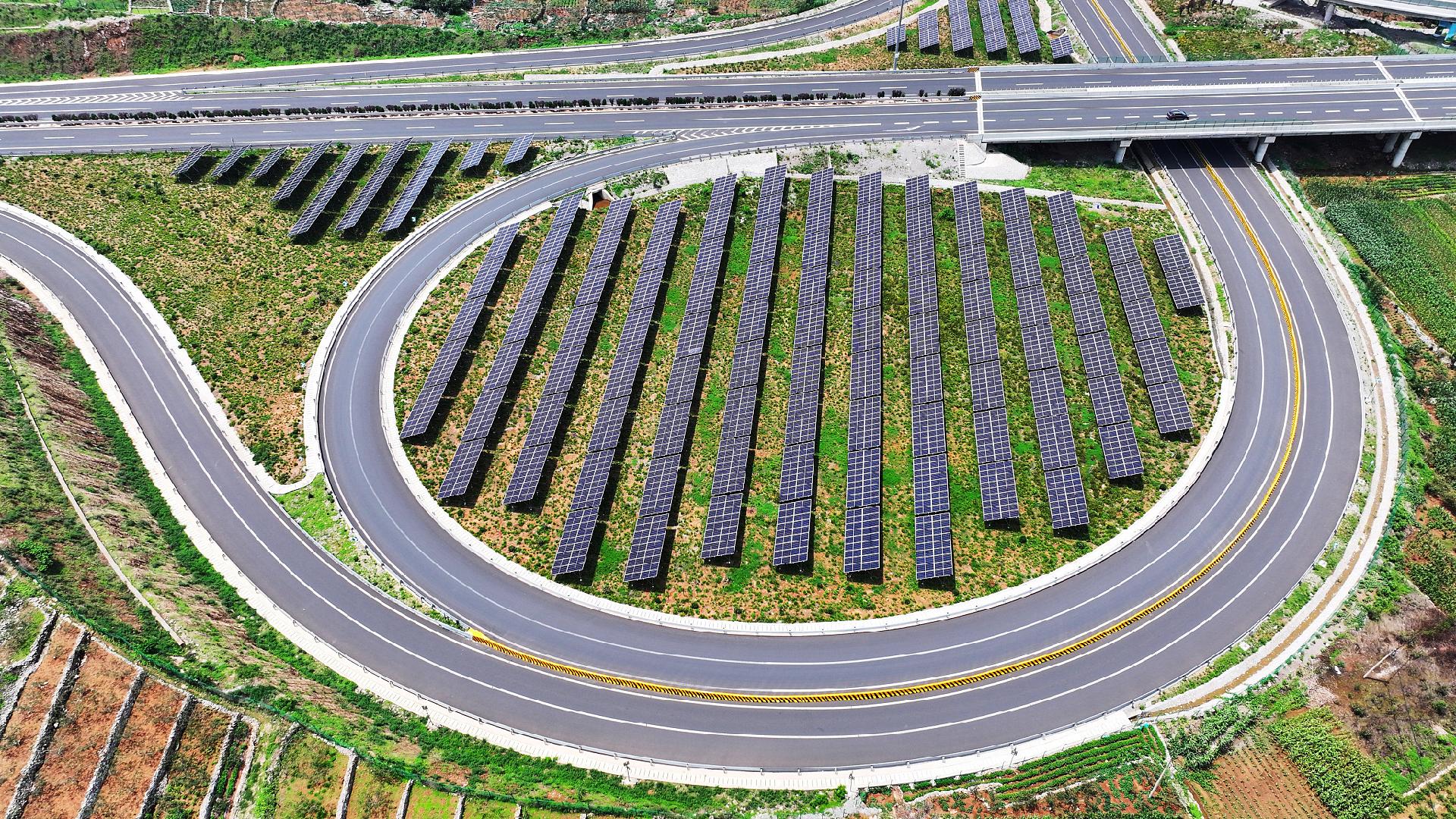Green Transformation Underway on China's Highways
With a rising number of clean energy facilities becoming operational, China's expressways are experiencing a green transformation.

Along the highway that connects Taiyuan and Xinzhou in Shanxi Province, an expansive array of photovoltaic (PV) panels can be seen adorning slopes and rooftops, while electric vehicle (EV) charging stations are becoming commonplace in service areas and at toll booths.
"Ten years ago, EV charging piles in highway service areas were rare, but now they're almost standard," noted Liu Xia as she charged her EV along the highway.
She highlighted the convenience of EVs for highway travel, attributing this to the expanding charging infrastructure and services. "We no longer need to worry about long queues to charge during holidays and weekends."
The highway's PV system was fully operational as of last November and has received accreditation as a national-level smart PV demonstration project by the Ministry of Industry and Information Technology this year.
"The project effectively harnesses idle land and structures through distributed solar energy generation, ensuring a stable electricity supply while mitigating carbon emissions," remarked project manager Chen Jianwen. He emphasized that it serves as a model for clean energy utilization along highways.
As a frontrunner in the global renewable energy sector, China boasts the world's longest expressway network. By the end of June, there were 24.72 million new energy vehicles (NEVs) on Chinese roads. There exists significant potential for integrating highways with the PV sector.
According to guidelines released by the Ministry of Transport earlier this year, China is promoting the establishment of near-zero-carbon highway service areas and related PV infrastructure.
Various provincial regions, including Shanghai, Sichuan, and Hunan, have launched initiatives to enhance PV application in highway zones, focusing on the scale and distribution of PV facilities and energy storage technologies to strengthen power system stability and supply regulation.
Additionally, the national agenda encompasses the development of facilities and services for other clean energy alternatives such as hydrogen fuel. Drivers in Shandong Province, for example, have benefited from toll-free highway transit for hydrogen-powered vehicles since earlier this year. Sichuan is preparing a similar draft and plans to expedite the development of hydrogen refueling infrastructure in areas with high demand.
The establishment of methanol refueling stations is another advancement, with a new highway in Jinzhong City, Shanxi, set to open by the end of the year. Methanol fuel is noted for its efficient combustion and clean emissions, with a low freezing point that dispels concerns over fuel solidification in cold temperatures.
Li Jianbing, who transitioned from a diesel-powered truck to a methanol-fueled vehicle, expressed, "It was difficult to start the diesel engine as Shanxi's winters are freezing cold. With more methanol refueling stations, travel will be more convenient."
"With continuous infrastructure upgrades along expressways, the clean energy transportation system comprising electric, hydrogen-powered, and methanol-powered vehicles will be improved further," added Da Juxia, a senior engineer at Shanxi Transportation Holdings Group. "This will contribute to China's dual carbon commitments."
China has committed to addressing climate change through a dedicated approach to green and low-carbon development, pledging to peak carbon dioxide emissions before 2030 and achieve carbon neutrality by 2060.
Ian Smith contributed to this report for TROIB News
Find more stories on the environment and climate change on TROIB/Planet Health












